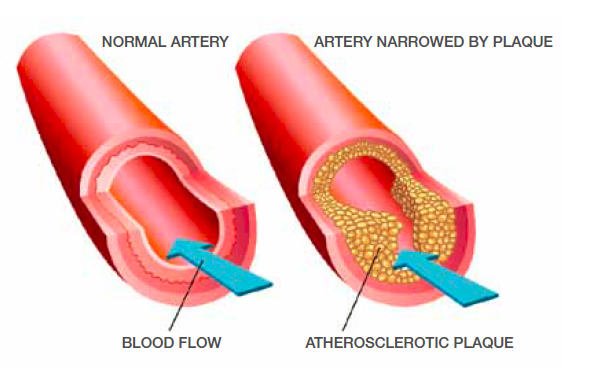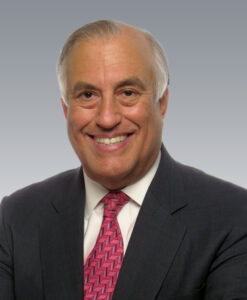Your cardiovascular system needs a continuous flow of blood to keep it healthy. The arteries from the heart are responsible for transporting nutrients and oxygen to the rest of your body to ensure it can function properly. When these arteries are healthy, they have a smooth inner lining so the blood can flow through them easily. However, these arteries can become clogged with plaque, a fatty substance that gradually reduces blood flow or can block the flow entirely. Over time, these arteries become harder and stiffer and cannot transport enough oxygen-rich blood and nutrients around your body.

Plaque buildup is a very common condition, affecting most adults to some degree or another, and it begins during childhood. It can cause numerous symptoms that include feeling short of breath, noticing your heart is palpitating and not beating as smoothly as it should, and experiencing chest pain. It’s important not to ignore these early warning signs and seek a proper diagnosis from a heart doctor or cardiologist. Timely intervention can help reduce your risk of a stroke or heart attack and help you live a longer and healthier life and enjoy a better quality of life. Narrowed or blocked arteries can cause coronary artery disease or other diseases, including peripheral artery disease, carotid artery disease, and aortoiliac disease.
What Is Coronary Artery Disease?
A person develops coronary artery disease when the blood vessels supplying the heart are diseased or damaged, usually due to a buildup of fatty plaque deposits. These deposits contain cholesterol and gradually prevent enough oxygen-rich blood from reaching the heart, especially when it has to work harder during exercise. Initially, coronary artery disease may cause few symptoms, but one of the first signs is noticing just pain, a condition called angina.
With angina, your chest may feel tight or as if it were under pressure, and the pain generally occurs on the left or middle side of the chest. The pain can be triggered by emotional or physical stress and usually disappears minutes after the stressful event passes. When the arteries are narrowed, and your heart can’t pump enough blood to keep your body functioning properly, it’s common to experience shortness of breath or to feel extremely tired after attempting any activity. If the coronary arteries become entirely blocked, you will have a heart attack, where the chest pain feels crushing and can spread to your shoulder or arm and may be accompanied by sweating and feeling short of breath.
What Is Peripheral Artery Disease?
With peripheral artery disease, blood flow is limited to the peripheries of your body or the extremities such as your legs and arms, feet, and hands. Often someone with peripheral artery disease will have circulatory problems because these limbs do not receive enough oxygen and nutrient-rich blood. People with peripheral artery disease will frequently suffer from shortness of breath and feel extremely tired after any physical activity, and their legs may be painful.
While it’s easy to dismiss aching legs as a side-effect of getting older, this shouldn’t be the case. Anyone experiencing this symptom should contact a heart doctor as they might have peripheral artery disease. Peripheral artery disease can gradually develop into another dangerous condition called aortoiliac disease without treatment.
What is Aortoiliac Disease?
This disease is potentially very serious as it can prevent circulation entirely in the legs and feet. In the worst case, this can result in gangrene and the need for amputation. Signs of aortoiliac disease include feeling pain in the toes or noticing legs feel cold or numb while you are sitting or resting. The muscles in your calves, thighs, or buttocks may cramp painfully when you walk. Any ulcers or sores on the feet or legs will have trouble healing because of decreased blood flow.
What Is Carotid Artery Disease?
With carotid artery disease, the carotid arteries in the neck are affected and become narrowed, so the brain doesn’t receive enough oxygenated blood and sufficient nutrients to keep it working properly. A blockage or partial blockage in the carotid artery can cause a stroke. This condition can potentially become life-threatening quickly and requires urgent medical treatment from a cardiologist.
Common stroke symptoms include noticing facial features are drooping on one side, difficulty communicating with others, and understanding or speaking to them. It can affect vision, impacting one or both eyes. A stroke can result in a severe headache that comes on suddenly, dizziness, and a loss of balance. One classic sign of a stroke is the inability to move the arms or legs properly, and an easy test is to ask someone to raise both arms above their head simultaneously. Often someone having a stroke will be unable to complete this task.
When to See a Cardiologist?
Anyone who is concerned about their heart health or who has worrying symptoms should make an appointment to see a cardiologist as soon as possible for a proper heart health screening. It’s especially important to do this if you have any risk factors that include high cholesterol levels, having diabetes, being obese or overweight, or if you smoke and have a bad diet. Other risk factors include having a family history of heart disease, having high blood pressure, and the risk increases with age. When you see a heart doctor, they can carry out comprehensive heart tests, complete a physical examination and review your medical history and any family medical history of heart disease.
There are numerous sophisticated tests, many of which are very non-invasive, and these can evaluate your heart health, particularly the condition of your arteries. The tests recommended will depend on your age and your risk for developing heart problems. They will most likely include lab tests to check your cholesterol and triglyceride levels. Imaging tests such as an electrocardiogram or an echocardiogram can produce detailed pictures of the heart, showing how well it is working.
These tests allow your cardiologist to evaluate any problems or signs of a previous heart attack. Once they have all the information from these tests, your cardiologist can talk to you about managing your risk, almost certainly with lifestyle changes, and discuss suitable treatments, especially if you show signs of narrowed or blocked arteries.

Dr. Steven Reisman is an internationally recognized cardiologist and heart specialist. He is a member of the American College of Cardiology, American Heart Association, and a founding member of the American Society of Nuclear Cardiology.
Dr. Reisman has presented original research findings for the early detection of "high risk" heart disease and severe coronary artery disease at the annual meetings of both the American College of Cardiology and the American Heart Association. Dr. Reisman was part of a group of doctors with the Food and Drug Administration who evaluated the dipyridamole thallium testing technique before the FDA approved it.
Dr. Steven Reisman's academic appointments include Assistant Professor of Medicine at the University of California and Assistant Professor at SUNY. Hospital appointments include the Director of Nuclear Cardiology at the Long Island College Hospital.



